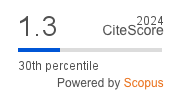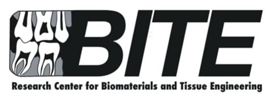Early intervention of anterior crossbite and unfavorable tongue posture with a prefabricated myofunctional appliance: A case report
Downloads
Background: Anterior crossbite in the primary dentition may be an early indicator of a developing Class III malocclusion. Clinical findings, hereditary factors, and environmental influences, such as breathing problems and tongue posture, should be considered for early intervention. Purpose: This case report describes the early diagnosis and intervention of anterior crossbite and unfavorable tongue posture as potential risk factors contributing to a Class III growth pattern. Case: An 8-year-old girl with a history of preterm birth and a familial history of Class III malocclusion presented with the chief complaint: lower teeth in front of upper teeth. Clinical findings included anterior crossbite in the primary canines, mild lower incisor crowding, and mesiocclusion in both second primary molars. The cephalogram revealed bimaxillary retrusion (SNA = 79°, SNB = 74°), a skeletal Class I (ANB = 4°, Wits = –2 mm), and a forward tongue posture. Case Management: An ENT specialist diagnosed the patient with allergic rhinitis, without any airway obstruction. A prefabricated myofunctional appliance was prescribed to guide the eruption of permanent teeth into their ideal positions, eliminate maxillary growth restriction, and retrain tongue posture. The anterior crossbite of the primary teeth and the crowding were corrected within 9 months. Use of the appliance is ongoing until all permanent incisors have fully erupted and ideal occlusion is achieved. Conclusion: Myofunctional therapy during early mixed dentition may serve as a beneficial interceptive treatment to retrain orofacial muscles and guide the eruption of permanent teeth into an ideal occlusion.
Downloads
Pellegrino M, Cuzzocrea ML, Rao W, Pellegrino G, Paduano S. Myofunctional treatment of anterior crossbite in a growing patient. Case Rep Dent. 2020; 2020: 8899184. doi: https://doi.org/10.1155/2020/8899184
Zere E, Chaudhari PK, Sharan J, Dhingra K, Tiwari N. Developing class III malocclusions: challenges and solutions. Clin Cosmet Investig Dent. 2018; 10: 99–116. doi: https://doi.org/10.2147/CCIDE.S134303
Wijey R. Treatment for class III malocclusion: Surely we can do better? Australas Dent Pract. 2017; (April): 80–4. web: http://ortholabsolution.com/images/Documents/Treatment for Class III.pdf
Primozic J, Farcnik F, Perinetti G, Richmond S, Ovsenik M. The association of tongue posture with the dentoalveolar maxillary and mandibular morphology in class III malocclusion: a controlled study. Eur J Orthod. 2013; 35(3): 388–93. doi: https://doi.org/10.1093/ejo/cjs015
Iwasaki T, Sato H, Suga H, Takemoto Y, Inada E, Saitoh I, Kakuno E, Kanomi R, Yamasaki Y. Relationships among nasal resistance, adenoids, tonsils, and tongue posture and maxillofacial form in class II and class III children. Am J Orthod Dentofacial Orthop. 2017; 151(5): 929–40. doi: https://doi.org/10.1016/j.ajodo.2016.10.027
Myrlund R, Dubland M, Keski-Nisula K, Kerosuo H. One year treatment effects of the eruption guidance appliance in 7- to 8-year-old children: a randomized clinical trial. Eur J Orthod. 2015; 37(2): 128–34. doi: https://doi.org/10.1093/ejo/cju014
Riley DS, Barber MS, Kienle GS, Aronson JK, von Schoen-Angerer T, Tugwell P, Kiene H, Helfand M, Altman DG, Sox H, Werthmann PG, Moher D, Rison RA, Shamseer L, Koch CA, Sun GH, Hanaway P, Sudak NL, Kaszkin-Bettag M, Carpenter JE, Gagnier JJ. CARE guidelines for case reports: explanation and elaboration document. J Clin Epidemiol. 2017; 89: 218–35. doi: https://doi.org/10.1016/j.jclinepi.2017.04.026
Rusli RO, Achmad H, Kuandinata W, Fatimah I, Nurwahidah A, Halid S, La Mente NH. Myobrace versus twin block in the treatment of class II malocclusion in Children: A systematic review. Saudi Dent J. 2024; 36(5): 661–4. doi: https://doi.org/10.1016/j.sdentj.2024.03.006
Chen L-R, Lai C-L, Chang I-T, Hsu C-L, Liu J-F, Kao C-T. Evaluation of skeletal and dentoalveolar changes in class II division I pediatric patients receiving myofunctional appliance therapy: A preliminary study. J Formos Med Assoc. 2022; 121(10): 2028–34. doi: https://doi.org/10.1016/j.jfma.2022.02.008
Wishney M, Darendeliler MA, Dalci O. Myofunctional therapy and prefabricated functional appliances: an overview of the history and evidence. Aust Dent J. 2019; 64(2): 135–44. doi: https://doi.org/10.1111/adj.12690
Habumugisha J, Cheng B, Ma S-Y, Zhao M-Y, Bu W-Q, Wang G-L, Liu Q, Zou R, Wang F. A non-randomized concurrent controlled trial of myofunctional treatment in the mixed dentition children with functional mouth breathing assessed by cephalometric radiographs and study models. BMC Pediatr. 2022; 22(1): 506. doi: https://doi.org/10.1186/s12887-022-03559-w
Proffit WR, Fields HW, Larson B, Sarver DM. Contemporary orthodontics. 6th ed. St. Louis: Mosby; 2018. p. 744. web: https://www.elsevier.com/books/contemporary-orthodontics/proffit/978-0-323-54387-3
McNamara JA. A method of cephalometric evaluation. Am J Orthod. 1984; 86(6): 449–69. doi: https://doi.org/10.1016/s0002-9416(84)90352-x
Alfawzan A. Assessment of airway dimensions in skeletal class I malocclusion patients with various vertical facial patterns: A cephalometric study in a sample of the Saudi population. J Orthod Sci. 2020; 9(1): 12. doi: https://doi.org/10.4103/jos.JOS_10_20
Small P, Keith PK, Kim H. Allergic rhinitis. Allergy Asthma Clin Immunol. 2018; 14(Suppl 2): 51. doi: https://doi.org/10.1186/s13223-018-0280-7
Myofunctional Research Co. Myobrace myofunctional orthodontics appliance catalogue. 2018. Available from: https://myoresearch.com/storage/app/media/resources/Brochures-Catalogues/Myobrace_AC_1217_ENG_v4.0.5-WEB.pdf. Accessed 2023 Feb 1.
Farronato G, Giannini L, Galbiati G, Grillo E, Maspero C. Occlus-o-Guide® versus Andresen activator appliance: neuromuscular evaluation. Prog Orthod. 2013; 14(1): 4. doi: https://doi.org/10.1186/2196-1042-14-4
Fitriani Y, Puteri MM, Nelwan SC, Putri NMI. Myofunctional therapy using twin block appliance in a class II malocclusion patient with ADHD. Acta Med Philipp. 2022; 56(8): 82–6. doi: https://doi.org/10.47895/amp.vi0.2773
Homem MA, Vieira-Andrade RG, Falci SGM, Ramos-Jorge ML, Marques LS. Effectiveness of orofacial myofunctional therapy in orthodontic patients: a systematic review. Dental Press J Orthod. 2014; 19(4): 94–9. doi: https://doi.org/10.1590/2176-9451.19.4.094-099.oar
Copyright (c) 2025 Dental Journal

This work is licensed under a Creative Commons Attribution-ShareAlike 4.0 International License.
- Every manuscript submitted to must observe the policy and terms set by the Dental Journal (Majalah Kedokteran Gigi).
- Publication rights to manuscript content published by the Dental Journal (Majalah Kedokteran Gigi) is owned by the journal with the consent and approval of the author(s) concerned.
- Full texts of electronically published manuscripts can be accessed free of charge and used according to the license shown below.
- The Dental Journal (Majalah Kedokteran Gigi) is licensed under a Creative Commons Attribution-ShareAlike 4.0 International License

















